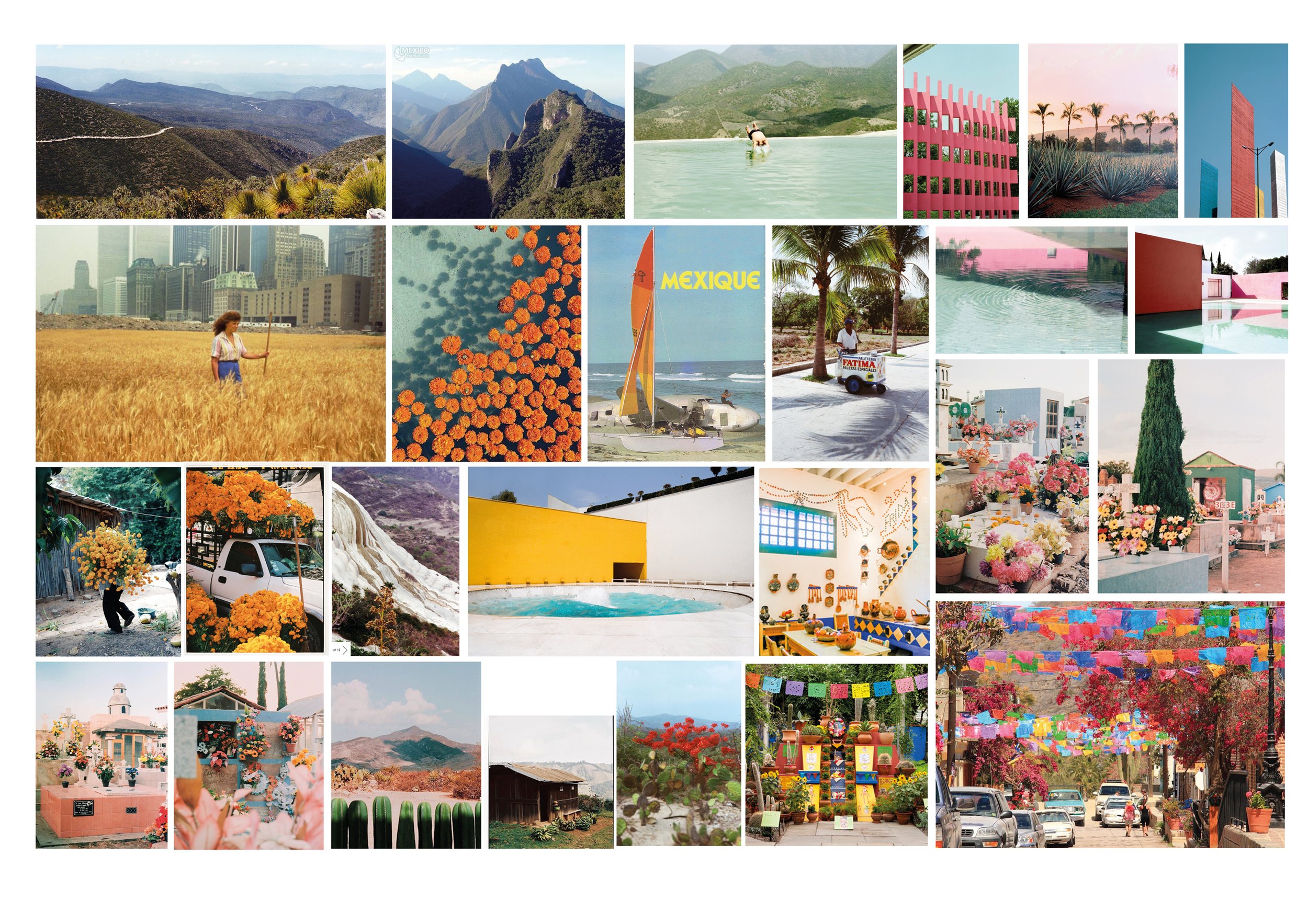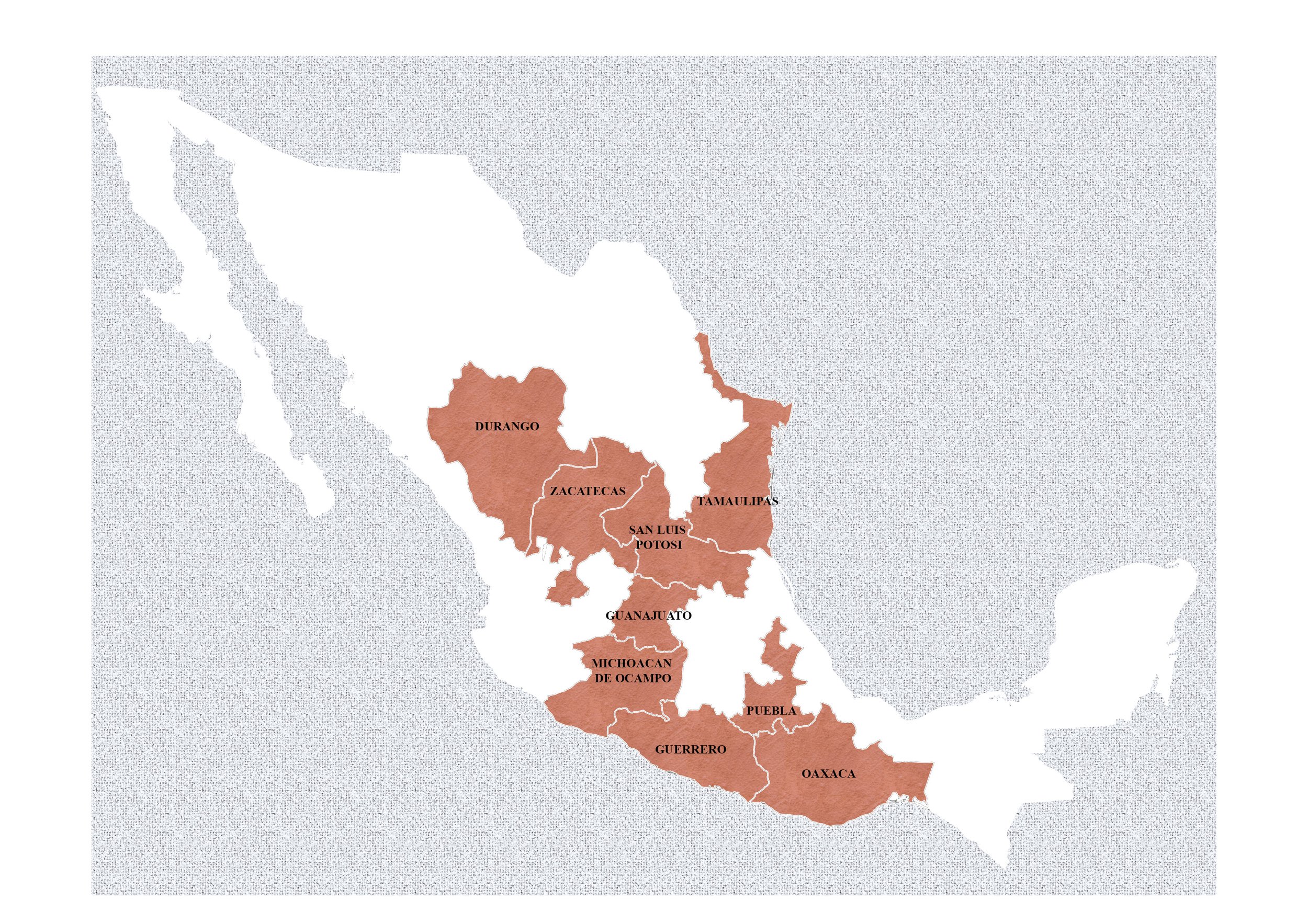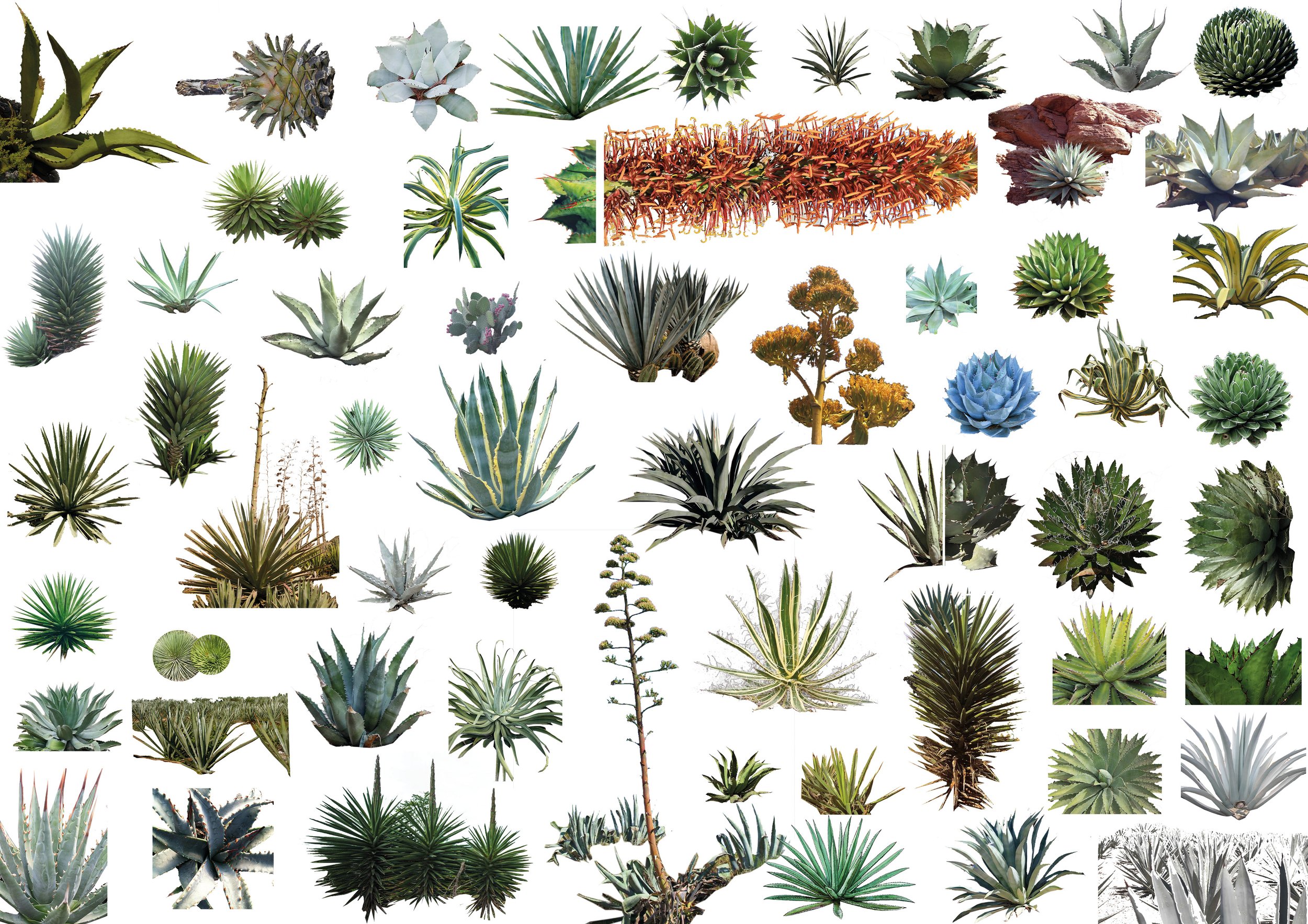The Parallel Landscapes of Mexican Heritage
2021
Rhino, Grasshopper, Photoshop
An artistic community in Tlahualilo, Durango, that is passionate about preserving the traditional techniques and designs passed down through generations.
The search for Mexican ancestry began with the revelation of how mezcal, a Mexican distillate, is created. Mezcal, both the drink and the technique of making it, reflect the spirit and culture of Mexico. It is completely handmade from start to finish and is regarded as the most authentic traditional product.
After seeing how it is manufactured, it is clear that mezcal is intrinsically intertwined with handcrafted art. Crafts have deep roots in history and are typically considered museum objects—a relic of the past rather than a component of the present or future. The idea behind this project is to build a city that will preserve, promote, and develop folklore and handcraft arts related to creativity, brainstorming, uniqueness, self-employment, women's entrepreneurship, and so on.
The community aims to provide economic opportunities for artisans by connecting them with local and international markets to sell their work. Through events and workshops, they also try to engage the local youth to learn and pass on the cultural heritage to the next generation.
This community is an important part of Tlahualilo's cultural identity, and its preservation and promotion of traditional handcrafts contribute to the preservation of the area's rich cultural heritage.





Observing the surrounding areas as well as other larger traditional cities in Mexico, I find that there is an obvious 100 x 100 canvas for urban planning and, at the same time, a smaller 10 x 10 canvas for the agave plantations.
In my community, I adopt this canvas and in relation to the existing road network, the lines dividing the fields, and a few allusions to Aztec architecture, I design a semicircle that houses the project's central notion.Utilizing the lines at the river's outlets and common concentric circles centered on Palenque, the structures are distributed and organized.
Regarding the site, because 90% of mezcal is created in Oaxaca, where only 9% of the land is fertile, I chose to hunt for another province that would have more space and offer an opportunity to boost the tourism of the region.
A very crucial factor was the location's proximity to a water supply for the usage of water in the crops and in the production process.
We are therefore close to the Nazas River in the Durnago region. The native title of this stream is Tlahualilo, derived from the Nahuatl words tlalli, meaning "fertile land," and ahualila, meaning "water for irrigation."
The landscape is utilized by planting agaves as well as reforesting to improve nutrient exchange, lessen erosion, and boost ecological diversity.
We cultivate a variety of agave species in the fields to increase the richness required by the creatures and insects that make up the ecosystem that the agave is a part of.
















Design proposal for the residential areas.















